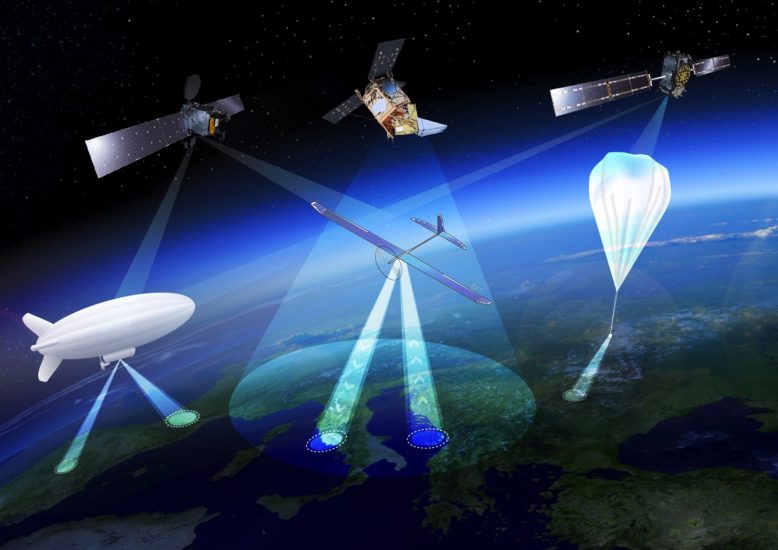One of the first operational concepts for the safe and efficient integration of high-altitude pseudo-satellites (HAPS) into airspace is being developed and validated as part of the OBeLiSk project. The team behind the project brings together organisations from the private sector (Leichtwerk Research and Unisphere), State-owned entities (the German air navigation service provider (DFS) and the German Meteorological Service (DWD)) and the university sector (TU Braunschweig, Institute of Flight Guidance). The project aims to enable the provision of information from high altitudes across Germany. Funding for the project is being provided by the German Federal Ministry for Economic Affairs and Energy (BMWi) as part of its aeronautics research programme.
A high-altitude pseudo-satellite, also known as HAPS, is an unmanned aerial vehicle that travels in the stratosphere. They are fully automated systems and are, simply put, satellites that travel much closer to the earth than conventional satellites. Due to their high local loitering capability and their proximity to the earth, they can be used for observation purposes and telecommunication applications. They can provide important intelligence day and night and could be used, for example, for search and rescue missions, disaster relief, monitoring of environmentally relevant events, or in agriculture. HAPS can also make a flexible and efficient contribution to extending the coverage of the 5G cellular network across Germany.
The special flight performance of high-altitude pseudo-satellites in terms of speed, climb and descent rates, and long flight duration require careful and thorough flight planning. Changing weather conditions, however, pose a particular challenge, requiring continuous and efficient optimisation of route planning during the flight. For this task, the project partners want to develop concepts, procedures and rules for the dynamic operation of HAPS. Special consideration will be given to the requirements of operators for route planning and optimisation, as well as the optimisation of the controller’s working position. These human-machine interfaces improve working relationship between digital technology and air traffic control personnel.
“With the OBeLiSK project, we want to demonstrate a flight planning option that takes into account the requirements for stability and reliability. For the first time, we are enabling an automatic negotiation of flight plans between the HAPS and air traffic control,” said Thomas Krüger from Leichtwerk Research in Braunschweig, Germany. “These developments are fundamental for the economic and safe operation of HAPS in the future,” continued Krüger.
(Image: European Space Agency)
For more information visit:




